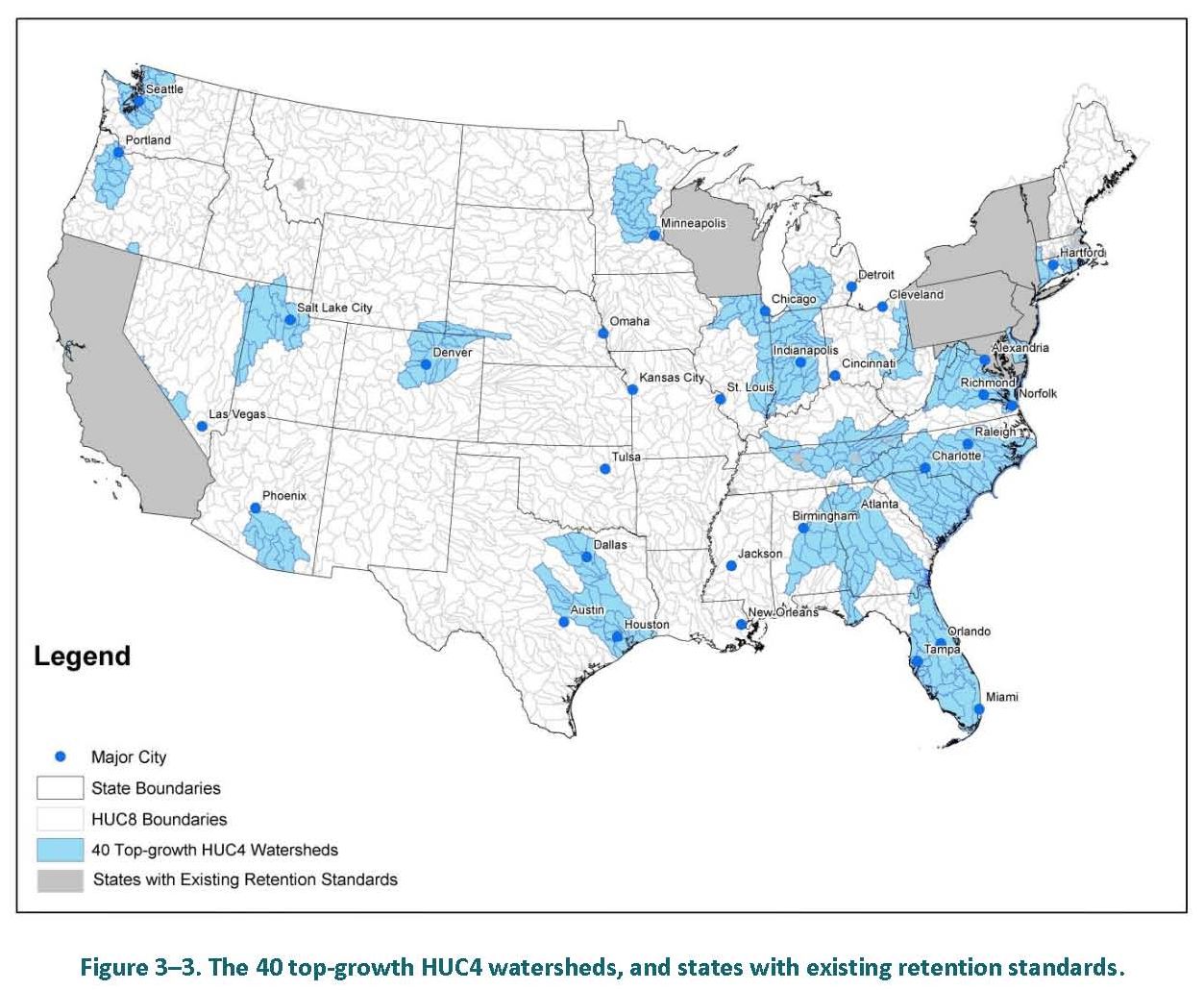US EPA released results of "Flood Loss Avoidance Benefits of Green Infrastructure for Stormwater Management" (Dec 2015)
Green infrastructure significantly reduces flood damages
Green Infrastructure (GI) for rainwater management, also known as Low Impact Development (LID), Sustainable Urban Drainage Systems (SUDS), or Water Sensitive Urban Design (WSUD), is a well-established approach now integral to numerous land development guidelines and regulations worldwide.
In December 2015, the United States Environmental Protection Agency (EPA) released a report titled Flood Loss Avoidance Benefits of Green Infrastructure for Stormwater Management. The study was completed under the direction of Dr. Daniel Medina of Atkins. He is based in the Washington DC Metro Area.
To Learn More:
Download Flood Loss Avoidance Benefits of Green Infrastructure for Stormwater Management.
Green Infrastructure & Flood Resilience
“A significant component of the Green Infrastructure (GI) paradigm-shift was to refocus management options away from a few large, centralized stormwater detention storage facilities to numerous small devices such as rain gardens, green roofs, and swales, spatially dispersed throughout a development site so as to capture rain where it falls,” states Dr. Daniel Medina, an Atkins Fellow. Circa 2000, he was a member of an international Expert Panel that played a role in Version 1.0 of the web-based Water Balance Model for British Columbia.
“ Vigorous research has demonstrated the water quality and channel protection benefits of GI; however, the effect of reducing the severity of flood events has not been investigated at a watershed level. To parallel the quote by Lao Tzu, the United States EPA posed this question – would the combined effect of thousands of rain gardens designed to capture relatively small volumes of runoff lead to a significant reduction in flood risk? The answer to this question is YES.”
Vigorous research has demonstrated the water quality and channel protection benefits of GI; however, the effect of reducing the severity of flood events has not been investigated at a watershed level. To parallel the quote by Lao Tzu, the United States EPA posed this question – would the combined effect of thousands of rain gardens designed to capture relatively small volumes of runoff lead to a significant reduction in flood risk? The answer to this question is YES.”
Approach to Computer Modelling
“The project examined the impact of GI on large-scale flooding on 20 large watersheds located in areas where significant growth is expected between 2020 and 2040,” continues Dan Medina.
“Watershed areas ranged from 1300 to 7700 square kilometers. Hydrologic and hydraulic modeling was conducted to delineate floodplains for various probabilities of recurrence, with and without GI, and using EPA’s projections for new development and redevelopment.”
“An essential component of the technical approach was the ability to model thousands of stream kilometers efficiently by automating development of model inputs, which was accomplished with Atkins’ Rapid Flood Delineator (RFD) hydraulic model.”
“The with- and without-GI floodplains were processed into depth grids and entered in the US Federal Emergency Management Agency’s (FEMA) flood damage assessment software Hazus to determine the avoided average annualized losses.The overall technical approach was vetted by a panel of experts from government, academia, and industry.”
Flood Losses Avoided = $Billions!
“The premise of the study for EPA is that GI reduces the volume of runoff that reaches streams, and less runoff leads to smaller peak flows, lower water surface elevations, smaller floodplains and therefore fewer flood losses,” continues Dr. Medina.
“The study estimates the flood losses avoided in the continental United States if GI were implemented as part of future development and redevelopment projects. We concluded that GI could have a significant role in reducing flood losses as long as it is applied on a watershed basis.
“With the growth projections for 2040, the study concluded that the United States could save between $100 million and $300 million annually in flood losses, and possibly as much as $700 million. The present value of total losses avoided between 2020 and 2040 are estimated to be between $US1 billion and $US2 billion dollars. The scope of the study did not include all of the infrastructure that could benefit from the effects of GI (e.g., roads, treatment plants, hospitals, power plants, and critical facilities); therefore, the actual avoided damages could be significantly higher.”
Community Resilience
 “GI/LID is used already to protect water quality and stream health. In addition to these environmental benefits, the study shows that GI can enhance community resilience to flood hazards. We are working with other Federal agencies to identify synergies and opportunities for collaboration,” adds Lisa Hair, Project Manager for the study at EPA’s Office of Water in Washington, DC.
“GI/LID is used already to protect water quality and stream health. In addition to these environmental benefits, the study shows that GI can enhance community resilience to flood hazards. We are working with other Federal agencies to identify synergies and opportunities for collaboration,” adds Lisa Hair, Project Manager for the study at EPA’s Office of Water in Washington, DC.
A Look Ahead
“GI is already a central concept in current land planning practices but it is rarely a consideration in flood hazard mitigation planning,” adds Dan Medina. “This shortcoming is caused by a disconnect between the comprehensive urban planning process and the disaster mitigation planning process, mostly due to the different priorities and missions of the entities involved at various levels in government.
“Yet, the results of this study indicate that GI can provide a way to link planning and hazard mitigation actions and create a comprehensive framework for creating safer, more livable communities.”
“Given that flood water is essentially the same as rainwater, there is a pressing need to improve the water-centric messaging about the link between runoff volume reduction and flood damage avoidance,” concludes Dr. Medina.




